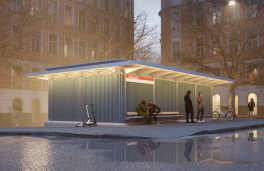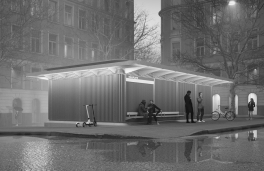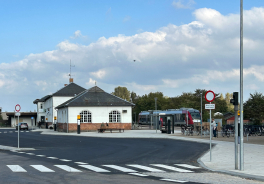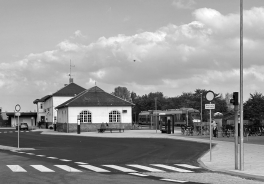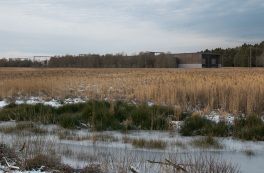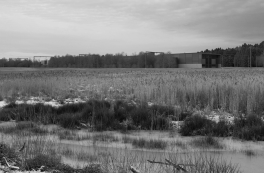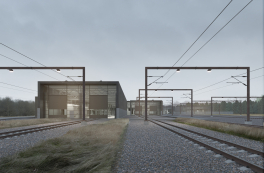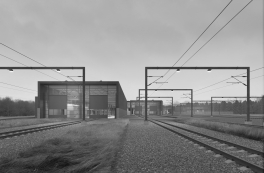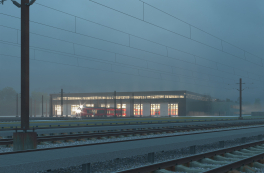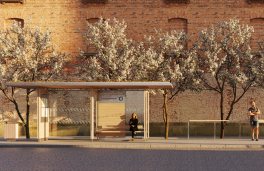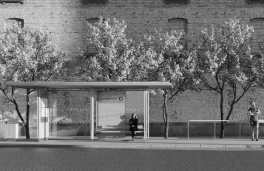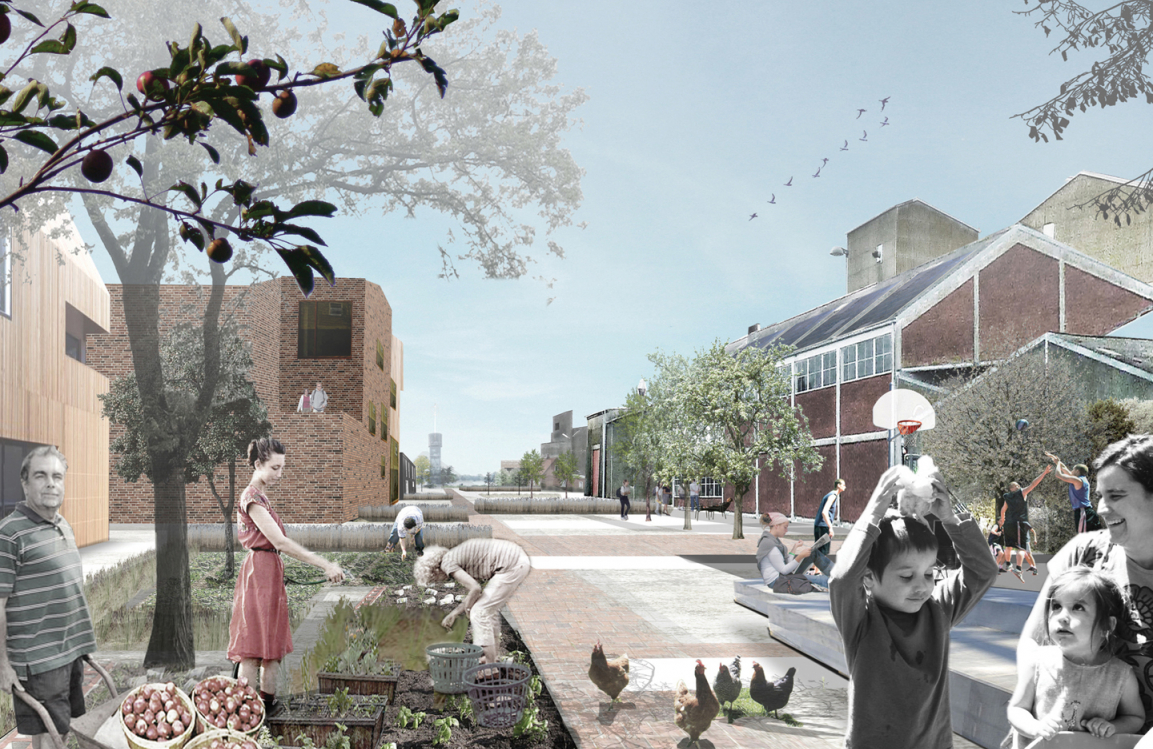
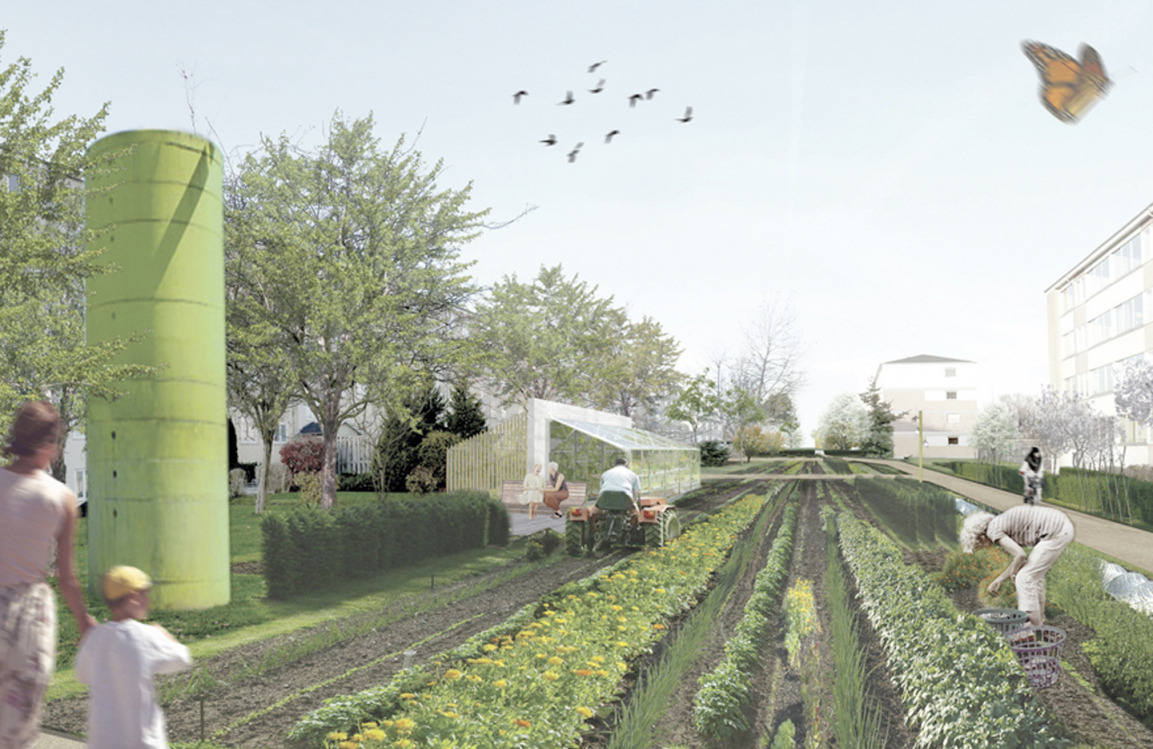
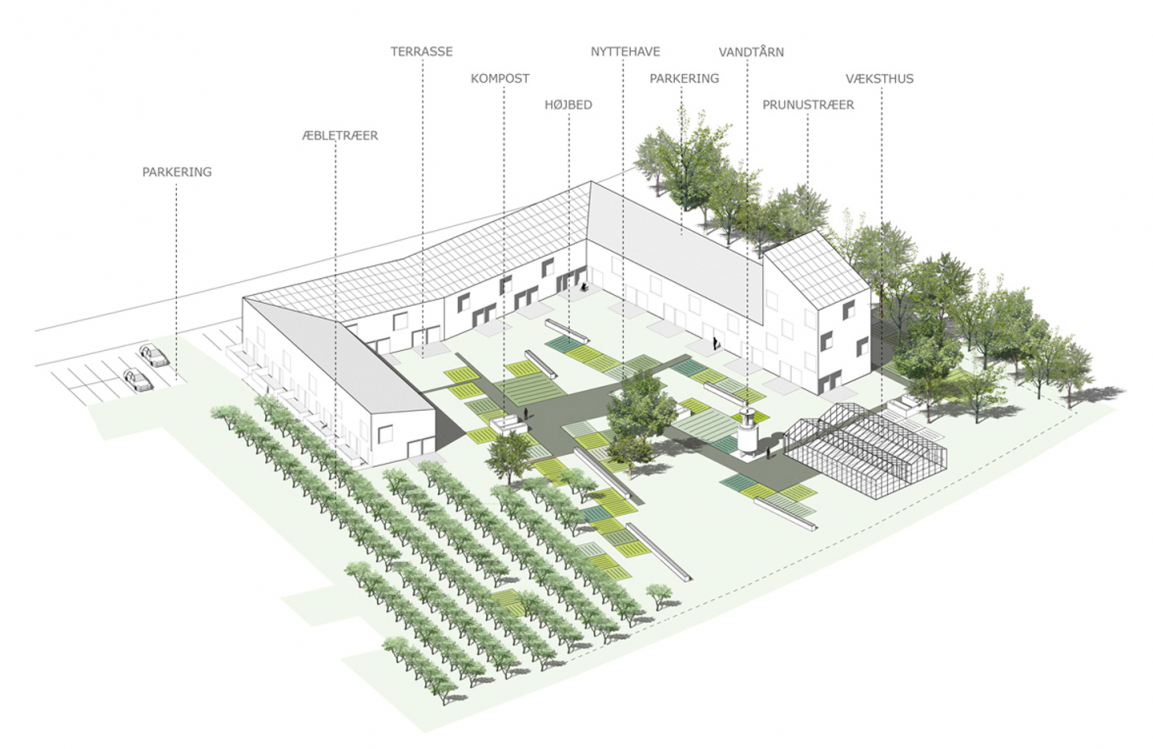
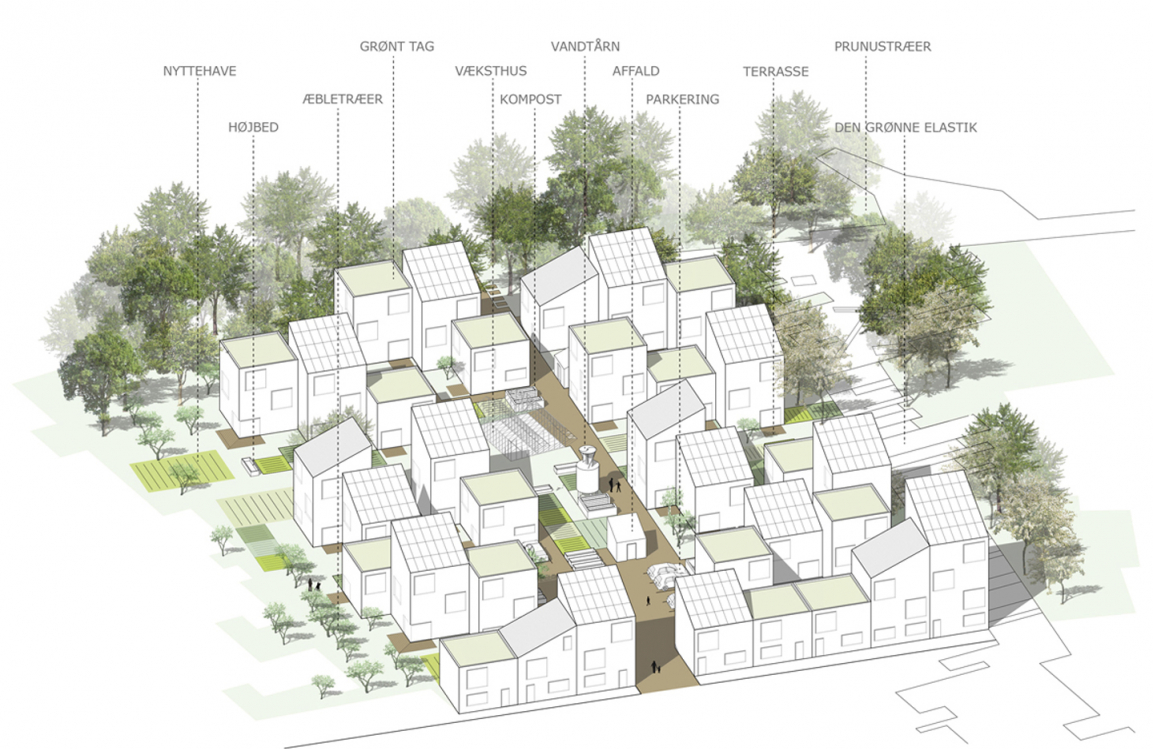
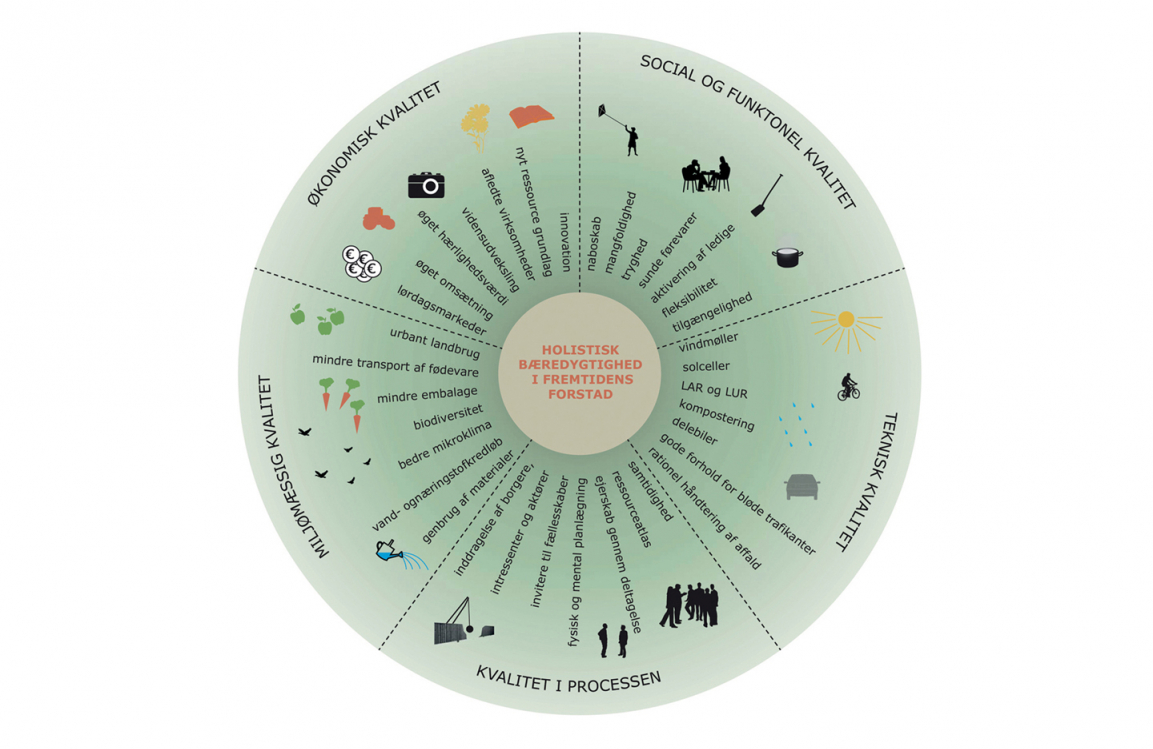
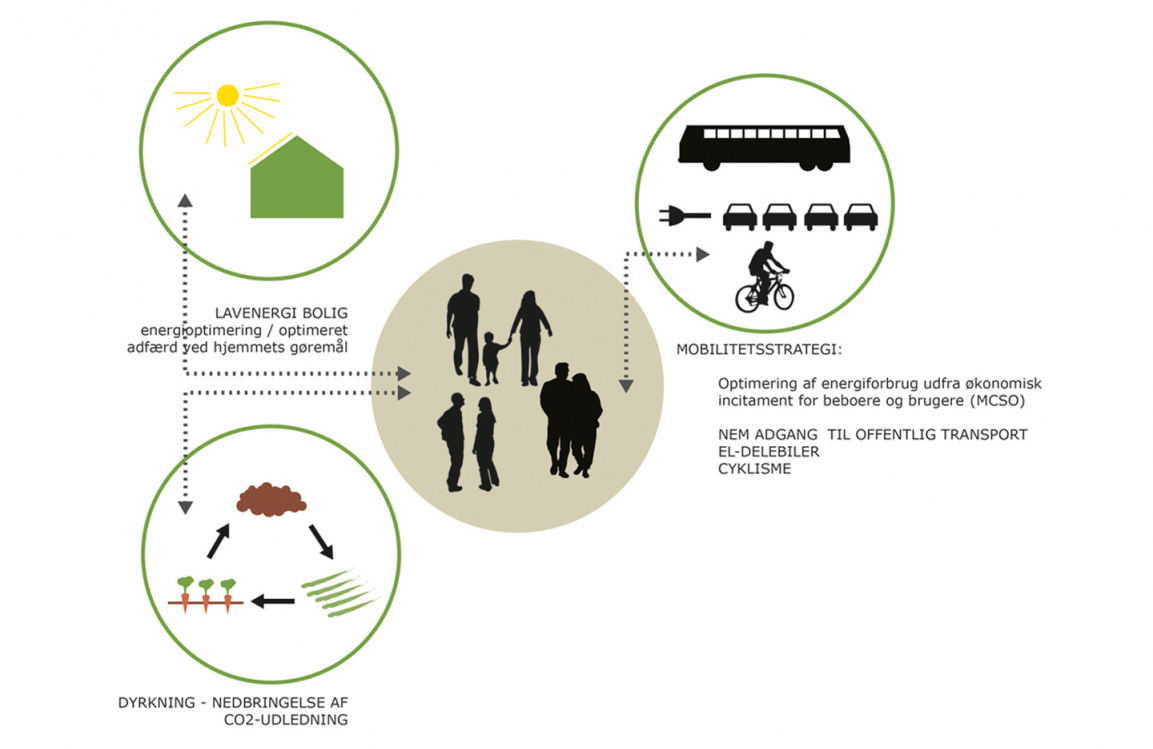
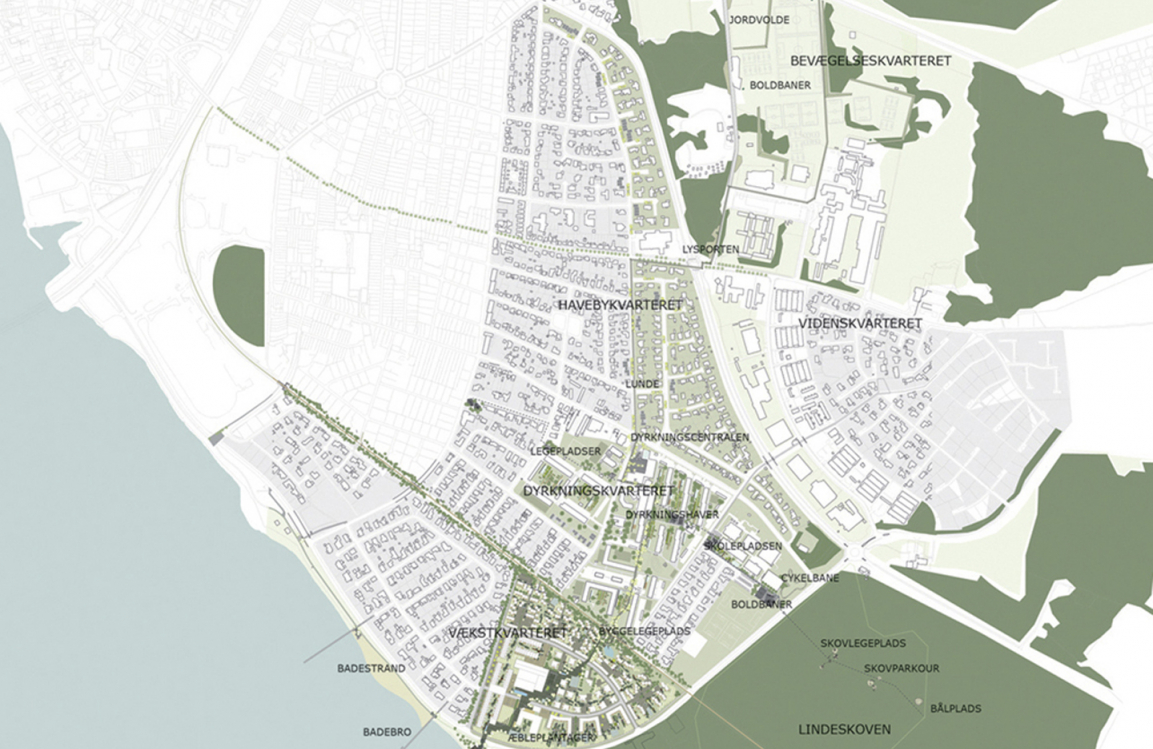
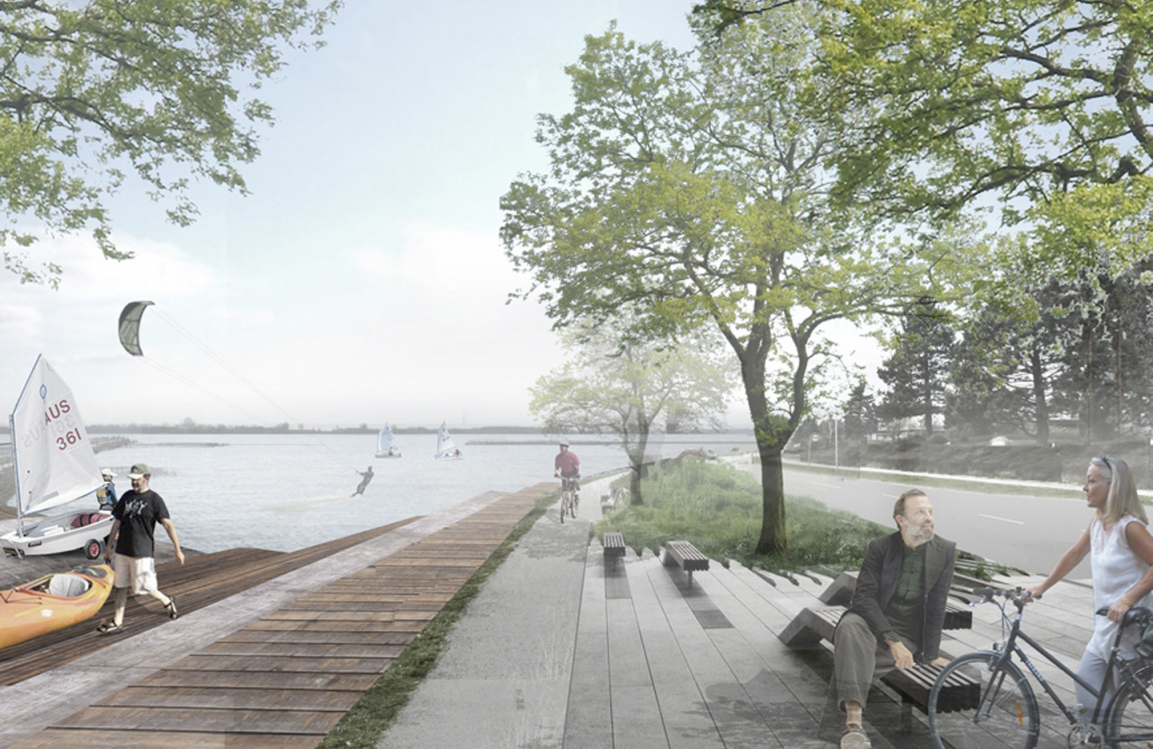
Suburbs of the Future, Nykøbing Falster
In the Suburbs of the Future, people will — quite literally — grow their neighbourhoods because without their enthusiasm and commitment, suburbs will wither and die. Everything they grow must be edible, and the focus must be on community, neighbourliness and the natural environment.
The ‘Grow Your City’ project was developed in cooperation with Elkiær + Ebbeskov, GHB Landskabsarkitekter, Hundsbæk & Henriksen (engineers), Rekommanderet and DEAS, and the entry was named the sixth and final winner of the competitions on the Suburbs of the Future, launched by the philanthropic association Realdania.
Urban development — both a physical and psychological process
“What is suburban living at its best?” This was the main question energizing development of the winning proposal ‘Grow your City’. It brings the lives of ordinary people into focus to visualize a strong and sustainable development of Ydre Østerbro in Nykøbing Falster, coupling highly tangible design features with local civic involvement. In doing so, it applies elements of urban development on a physical and a psychological level: People “dig” their city, they care about it, they want it to grow. They cultivate these ideas in their minds and their activities, giving a new focus to the core values of community, cooperation and countryside. It is in this fertile field of tension — between bringing new qualities to people’s daily living spaces, and introducing new and engaging communal activities — that the suburb’s potential benefits should be nurtured and harvested. This is one answer to the future of good suburban living.
The pantry down the street
The idea is not to reinvent the suburbs from scratch. If one is able to identify their existing strengths and exceptional features, the areas sometimes referred to as ‘the fringes’ may have the potential to become ‘the cutting edge’. The winning proposal describes a modern area of suburban cultivation — ‘the Growth Zone’ (Vækstzonen) — as a new residential quarter in Nykøbing Falster. The twin islands of Lolland and Falster have a proud history as Denmark’s pantry, and the project draws the cultivation of home-grown edibles right into the heart of the urban area, creating a new kind of suburb based on the region’s own authentic past. The Growth Zone creates the overall identity of a growing suburb: a place that combines the culture, activities and communal aspects of urban living with the peace, agricultural self-sufficiency and recreational opportunities of the countryside. A place where people can truly bloom and grow. The corridors and green structures interspersing the Growth Zone run through existing residential areas, which they redefine and upgrade, culminating near the sound in the new neighbourhood called the Growth Quarter.
From old industrial park to new, greener living spaces
The new Growth Quarter, built on the disused industrial grounds of the once-thriving sugar factories, will be transformed into a unique residential area with sustainable living and urban-farming spaces. The strategy of the winning proposal is rooted in the history and daily life of the area. Existing buildings and structures are retained and reused, allowing the planners to preserve the unique quality of the place. The distinctive character of the future suburb springs from the turf where past and present meet: industrial buildings, structures and materials from bygone days are paired with high-tech energy-saving installations, complemented with the physical and emotional qualities of the area’s green elements. The new living areas are structured around the everyday urban spaces, and the holistic thinking behind sustainable living revolves around the inhabitants’ daily activities. In short: living sustainably should be simple, enjoyable and enriching. It is here – in new ways of life that integrate cultivation with habitation and comradeship in new urban settings – that we envision the suburbanites of the future.
Visualizations: Gottlieb Paludan Architects

